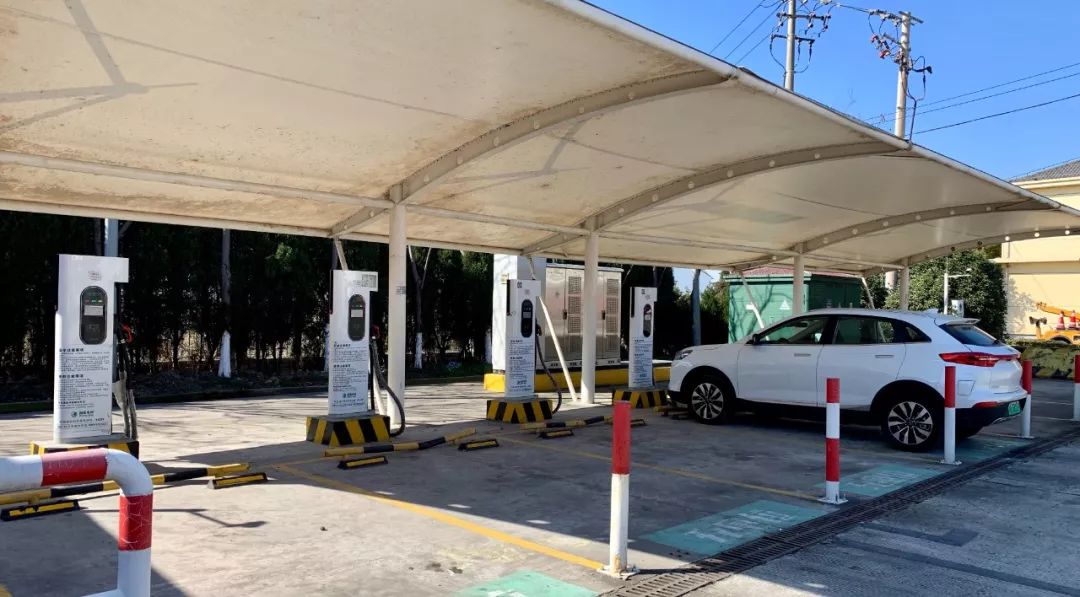What Are the Charging Speed and Endurance of the Winter Edition of Weima EX5 Like?
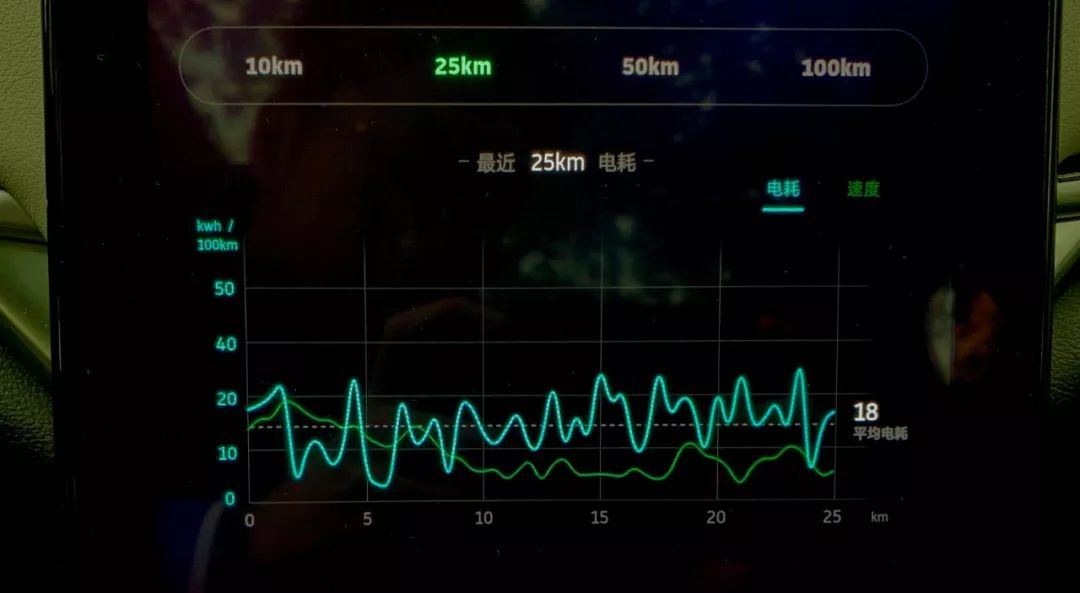
Does Weima EX5 Have Competitiveness in Endurance and Price?
Currently, comprehensive endurance is the most crucial technical indicator for electric vehicles and is directly related to sales volume. When Weima was launched last year, it had a total of three endurance versions: 300/400/500, and the corresponding NEDC endurances were 300km, 400km, and 460km. According to the 2018 subsidy price, the selling prices ranged from 112,300 yuan to 164,800 yuan (the 500 model is still unavailable for purchase, so the price range of available models is from 112,300 yuan to 139,800 yuan). In the environment where the comprehensive endurance of electric vehicles in 2018 was generally over 300 kilometers, and the subsidized selling price was between 150,000 to 200,000 yuan, Weima attracted a large number of consumers who enjoy electric vehicles or could only afford electric vehicles, thanks to its endurance of more than 400 kilometers and the relatively low price after subsidies.
But four months after it was launched, does Weima EX5 still have competitiveness in endurance and price?
First, let’s look at endurance. Although there are gradually more options with comprehensive endurance over 400km, Weima EX5 400 and above models can still hold their own without losing their competitiveness when compared to them.
Now, let’s take a look at the price. The subsidy in 2019 will slide considerably, which is almost a fact. Weima’s response strategy is that if the adjustment range of national and local subsidies exceeds 10,000 yuan, users who make a deposit from January 1 to March 31, 2019, will only need to pay an additional 10,000 yuan compared to 2018, and Weima will bear the rest. In other words, the impact of the subsidy on the EX5 price in the first quarter of 2019 will be a rise of 10,000 yuan, which I think is still acceptable.
Now that the data on paper and the price are acceptable, let’s take a look at the actual level!
How Long Does the EX5 Without PTC Heating Take to Charge Fully?
Enough small talk, let’s get back to the topic.
We have the high-end 400 edition of EX5, and the battery and energy-related data are summarized in the table below.
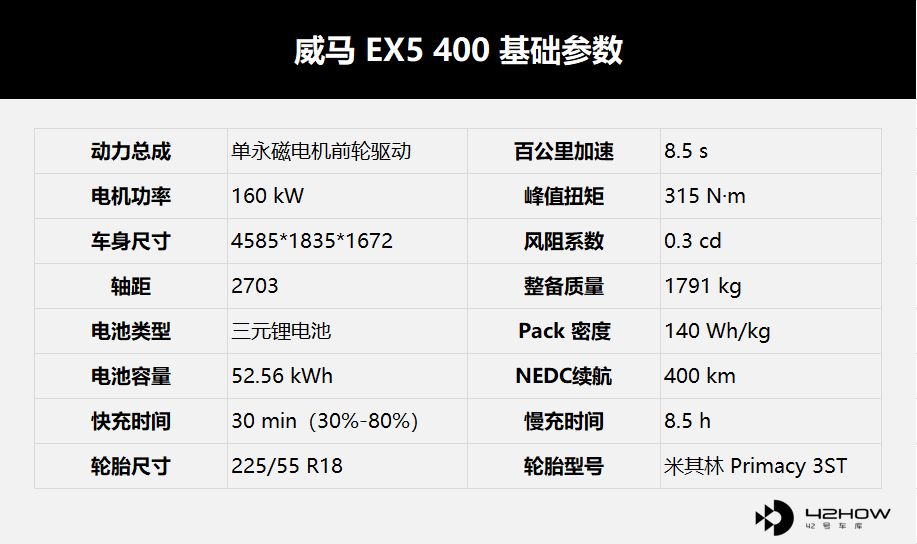 The standard configuration of the NIO ES8 is a liquid-cooled battery, and there are two optional heating components for the battery. The first is the PTC electric heating system with an additional price of 2,880 yuan, and the other is the diesel extreme cold heating system with a price of 8,000 yuan.
The standard configuration of the NIO ES8 is a liquid-cooled battery, and there are two optional heating components for the battery. The first is the PTC electric heating system with an additional price of 2,880 yuan, and the other is the diesel extreme cold heating system with a price of 8,000 yuan.
NIO’s official recommendation is that users south of the Qinling Mountains and the Huaihe River do not need to choose the electric heating system. Users north of the Qinling Mountains, south of the Yellow River, and in southern Xinjiang need to choose the electric heating system. For users in Northeast China, Inner Mongolia, and northern Xinjiang, it is suggested to choose the diesel extreme cold heating system.
Based on my recent experience in Shanghai, I strongly recommend friends living in regions where the temperature drops below 10 degrees Celsius during winter to choose the PTC electric heating system. Our long-term test car did not have the PTC electric heating system installed, and the maximum power when using fast charging was only 13-14 kW when the weather was cold. If the PTC electric heating system is installed, the power can reach over 40 kW, which makes a significant difference in actual experience.
Recently, the temperature in Shanghai has risen. The daytime temperature is around 10-15 degrees Celsius. I conducted my first test of the charging speed for the NIO ES8.
First, I drained the battery completely to 0% on the display, which does not necessarily mean that the battery is completely discharged. Most electric vehicles reserve a small amount of power, which means that the vehicle can still drive even when the displayed battery level is at 0%. However, we did not conduct such an extreme test, and we strongly advise against completely draining the battery.
Then, I used a direct current fast charging station provided by TELD to charge the vehicle. The data is summarized as follows:
During the charging process, the charging speed dropped strangely to around 20 kW in the middle. However, the charging speed for the first 80% remained at around 30-40 kW. The entire charging process took 2 hours, and the TELD app showed that a total of 50 kWh was charged, with an average power of 25 kW. In addition, according to the calculation for the NIO ES8 with a 52.5 kWh battery, there were still about 2-3 kWh of power left in the battery after the displayed battery level reached 0%.
Later, at the Yexie Service Area, I conducted a second charging test using the fast charging station of the State Grid. The data is summarized below: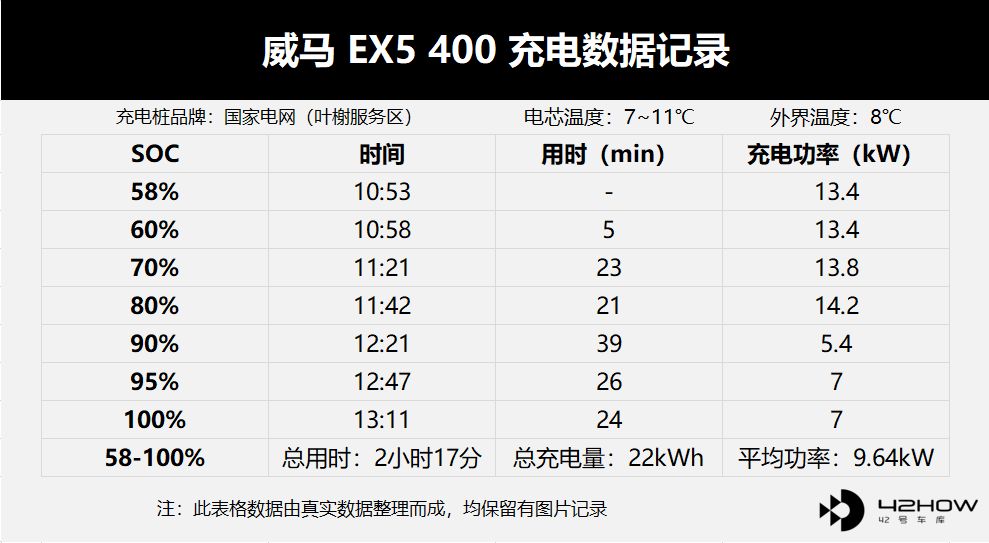
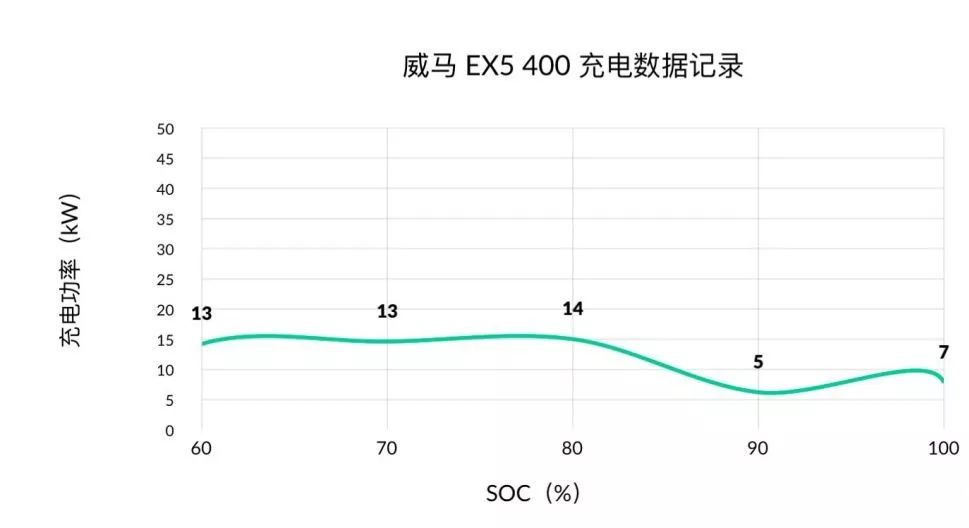
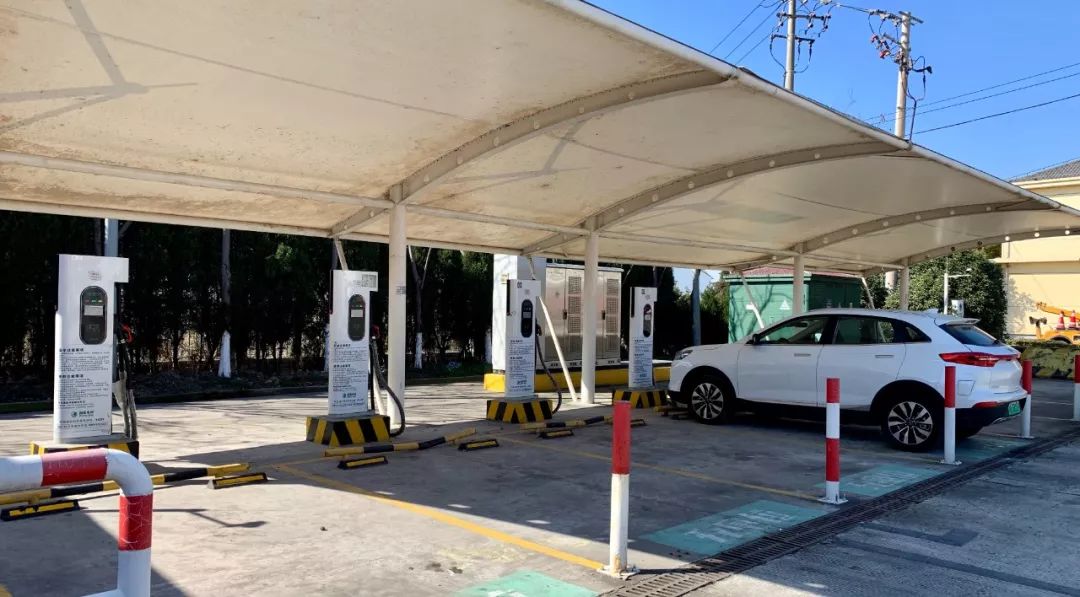
This time I charged from 58% to 100%, and the maximum power during the whole charging process did not exceed 15 kW. It took 2 hours and 17 minutes to charge 22 kWh, and the average power was only 9.64 kW. The whole process was very painful.
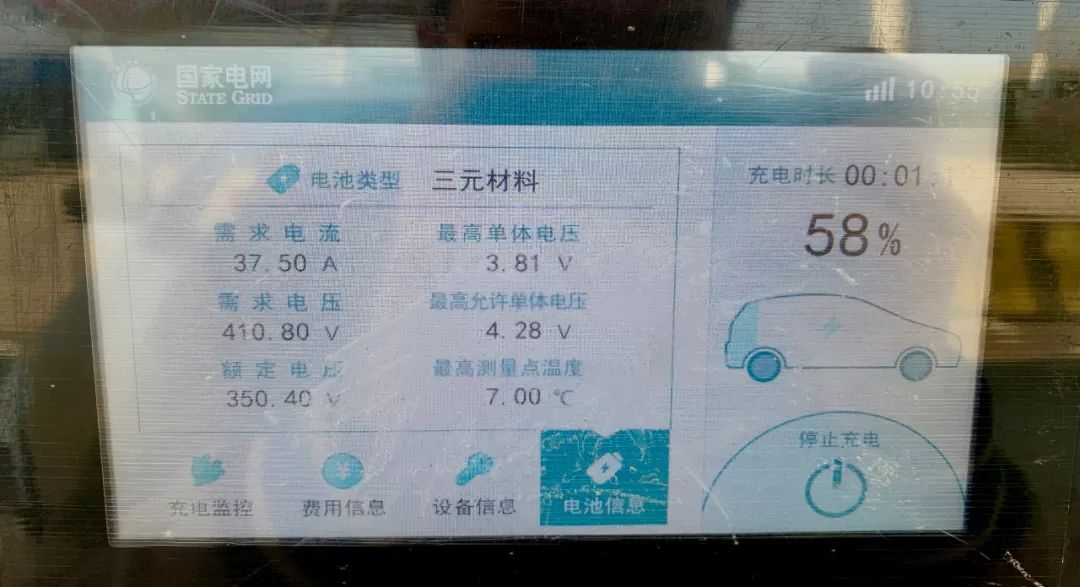
Why did I charge less this time and spend more time than last time? The culprit is the temperature. This time the outside temperature was only 8℃, and the battery temperature displayed on the State Grid’s charging pile was only 7℃. The battery temperature at the end of the charging process was only a pitiful 11℃.
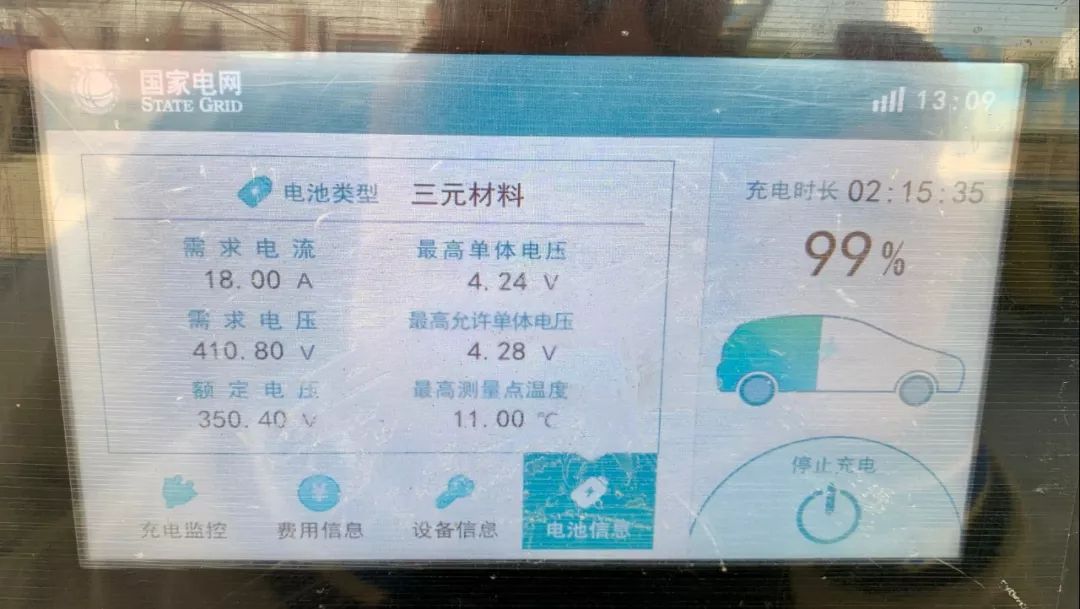
The optimal working temperature for lithium-ion batteries is around 25℃. If the temperature is too low, the internal activity of the battery will decrease, the internal resistance will increase, and the charging and discharging efficiency will be greatly affected.
Let’s look at another example. This is my third charging at the State Grid charging pile in Jiaxing:
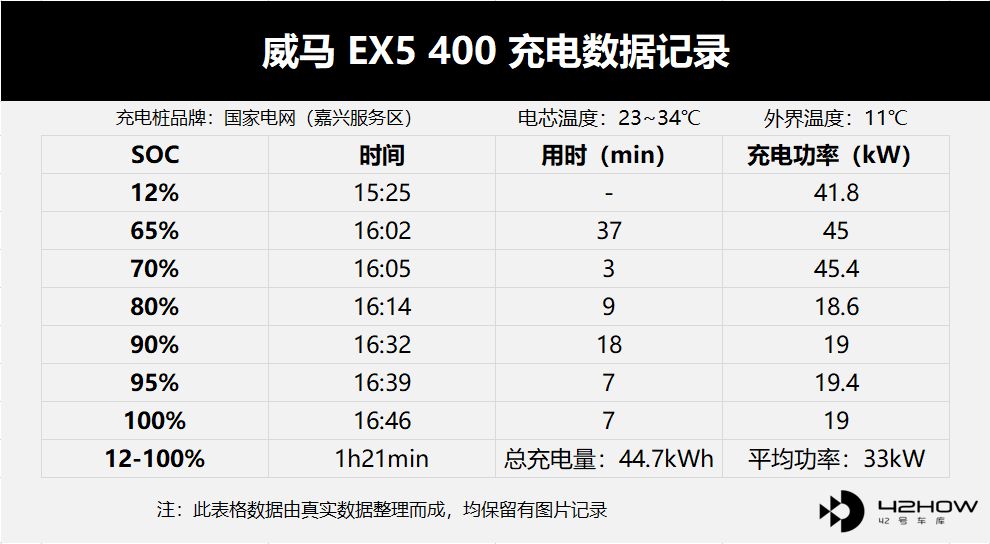
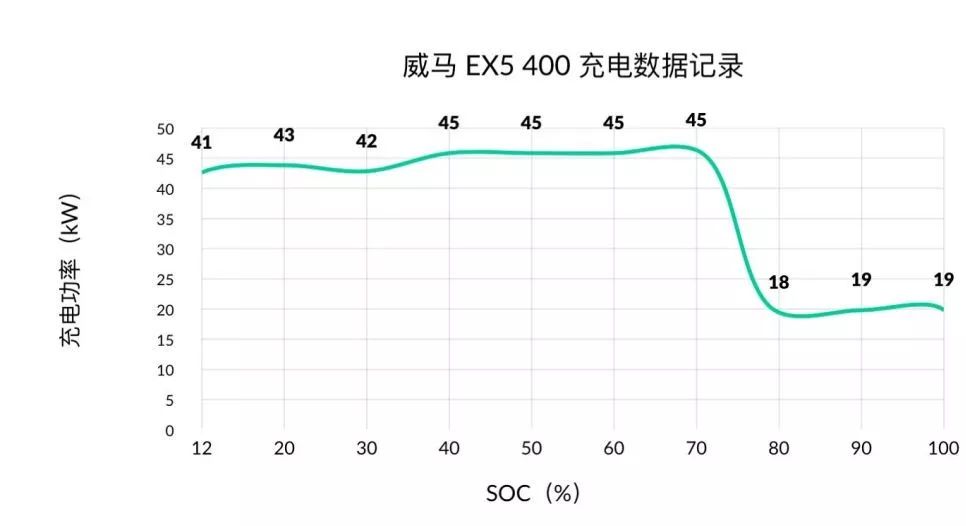
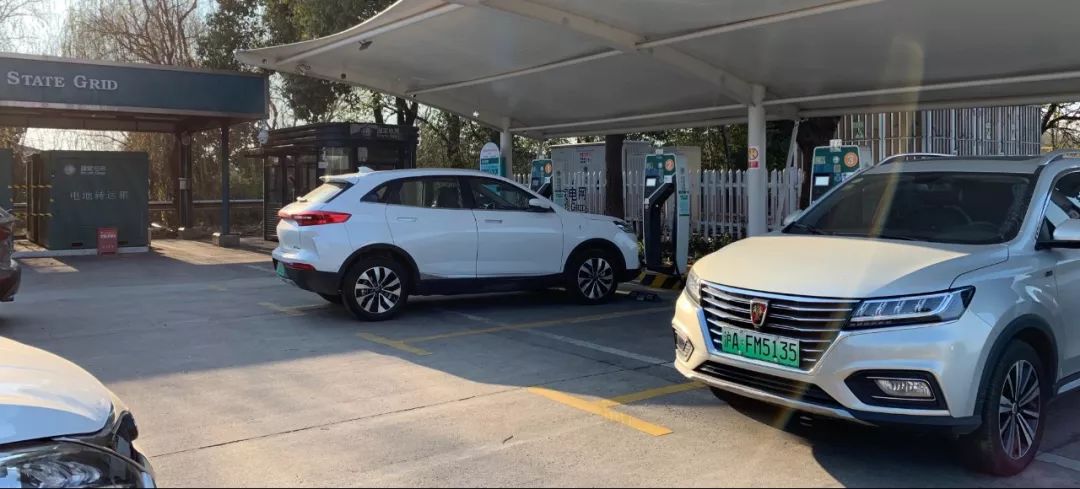 The charging power remained stable at around 45 kW until reaching 80%, after which it dropped to around 20 kW. The average charging power can reach up to 33 kW, which is three times more than before. If charging up to only 80%, the charging power can remain at around 45 kW. The significant improvement is due to the increase in battery cell temperature.
The charging power remained stable at around 45 kW until reaching 80%, after which it dropped to around 20 kW. The average charging power can reach up to 33 kW, which is three times more than before. If charging up to only 80%, the charging power can remain at around 45 kW. The significant improvement is due to the increase in battery cell temperature.
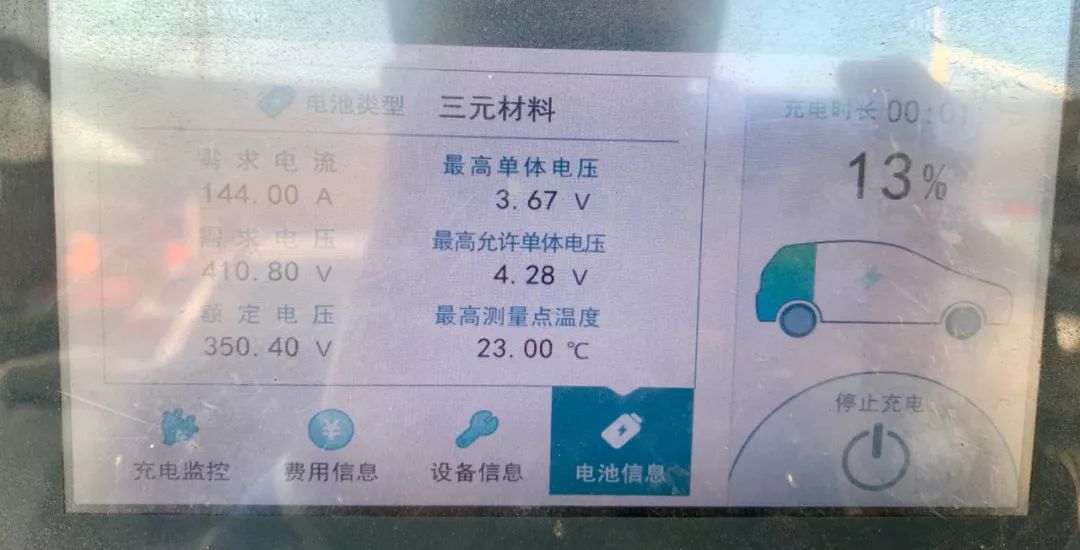
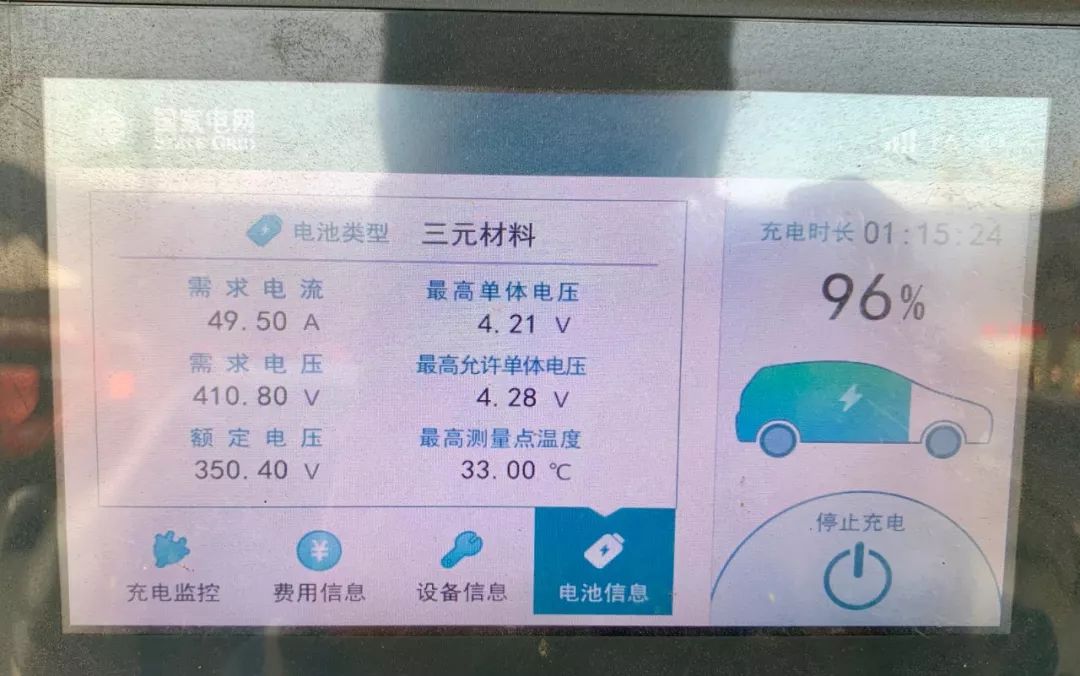
In summary, in the current weather conditions, it takes about 2 hours to fully charge the WmAuto EX5 400 model from 0%, which may take longer in cold weather and shorter in summer.
Two suggestions are worth mentioning. First, due to the physical characteristics of lithium batteries, the charging speed and efficiency will decrease after reaching 80%, which is not friendly to the battery life. Therefore, it is recommended to charge up to 80% in daily use. Second, because batteries have certain requirements for operating temperatures, it is strongly recommended to install PTC heating, which can greatly improve the charging experience in winter.
If the above two conditions are met, each fast charge can take about 40 minutes, which is acceptable.
Air Conditioning Consumes More Power Than High Speed Driving
Let’s move on to the range. I have listed the power consumption in several driving scenarios for your reference.
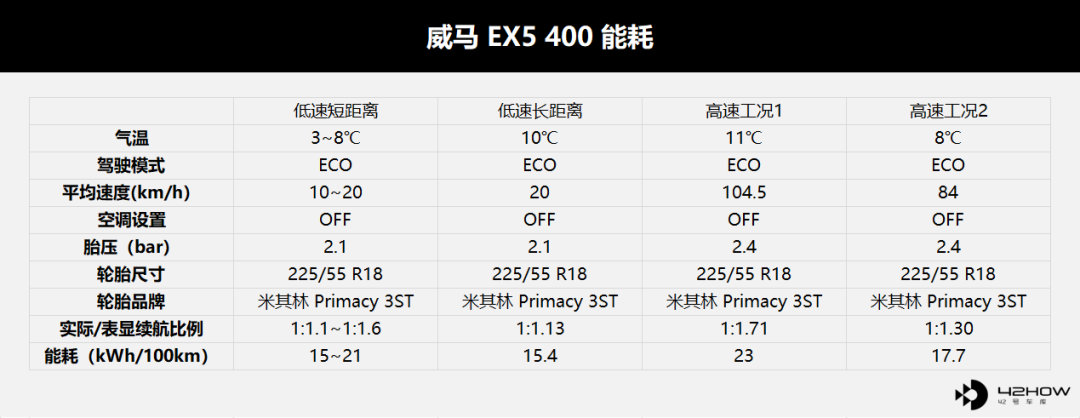
Scenario 1: Short Distance Low-Speed Driving
As I live relatively close to my company, my daily round-trip commuting distance is about 8-10 kilometers, and the data obtained may be biased due to the short distance. Additionally, because the ratio of idle time to driving time is abnormal, which is also not friendly to the air conditioning usage, I did not list the energy consumption for scenario 1 separately.### Scenario Two: Low-Speed Long-Distance Driving
In order to make the data we tested more realistic and less affected by other conditions, I spent some time driving around in the bustling area of Shanghai to extend the entire driving process under the conditions in the table below. The energy consumption of WEY EX5 was around 15.4, which is a relatively good level.
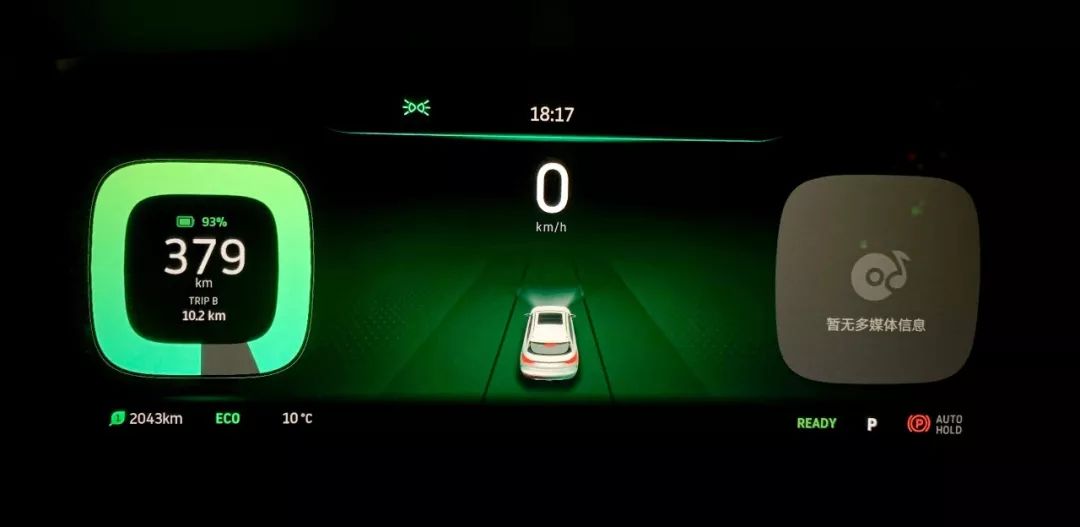
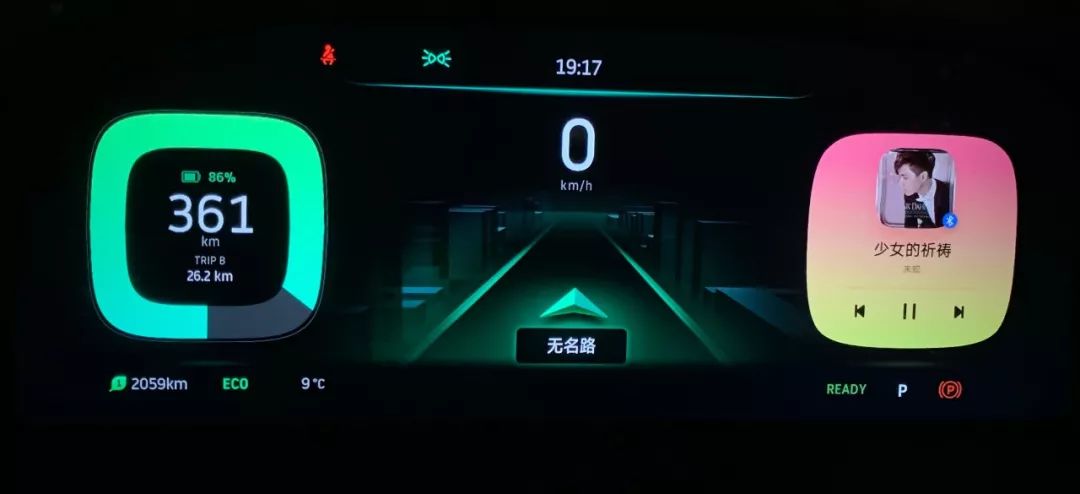
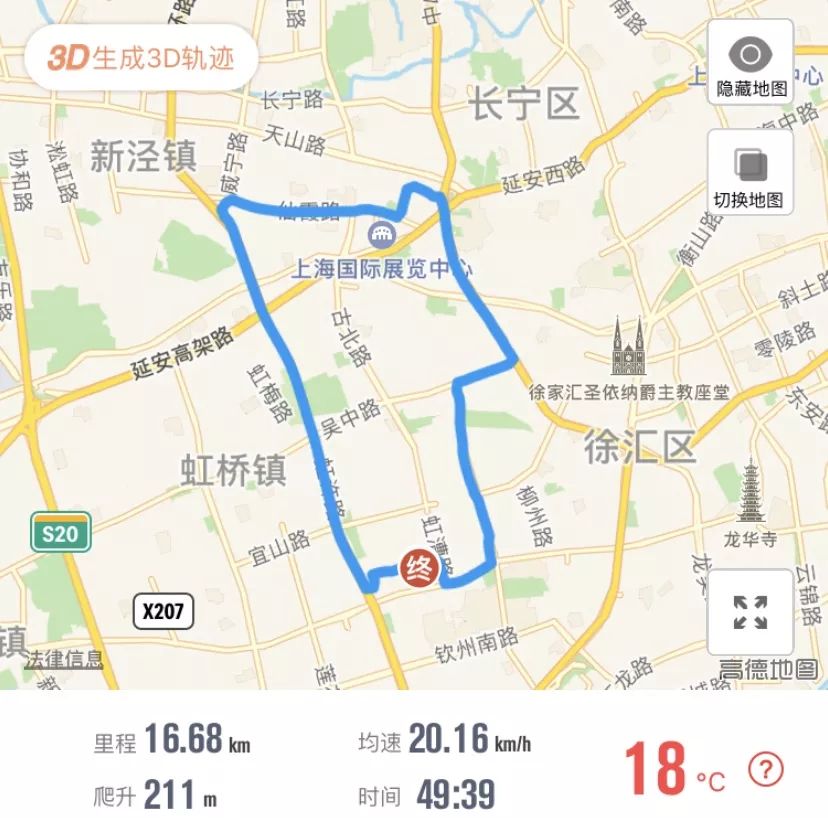
Scenario Three: High-Speed Driving 1
The energy consumption test process for high-speed driving was roughly as follows: I first drove the car to the Yexie service area in Shanghai, fully charged the battery, and replenished the tire pressure to the standard tire pressure of 2.4 bar. Then I drove at a speed of 120 km/h towards Hangzhou.

After passing through the Qiaosi hub and returning to the Shanghai-Kunming Expressway towards Shanghai, when I reached the Jiaxing service area, my instrument panel showed that there were still 60 km of endurance, but the next service area was still 45 km away. As a precaution, I chose to charge at the Jiaxing service area.
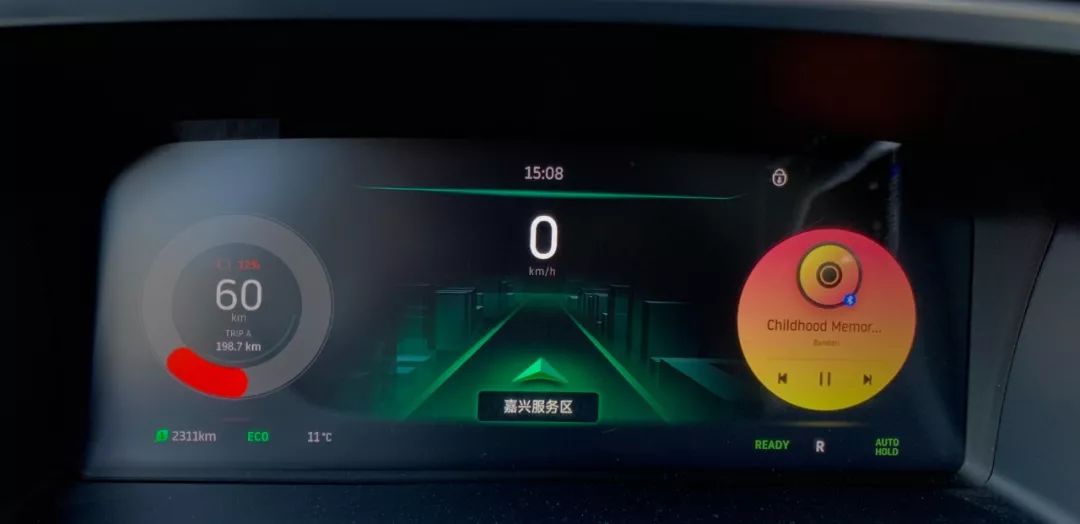
The total distance of this trip was 198.7 km, and I drove at a maximum speed of 120 km/h throughout the journey, with an average speed of 104 km/h. The energy consumption was at around 23 kWh per 100 km, so 200 km is a safe high-speed endurance for WEY EX5 400. There is still a few tens of kilometers of redundant endurance left.
Scenario Four: High-Speed Driving 2Don’t panic, the high-speed situation is not over yet. After recharging at the Jiaxing service area, there is still more than 80 kilometers of expressway to Shanghai. I decided to control the speed at 100 km/h to see how well the NIO ES6 would perform on a range test at that speed.
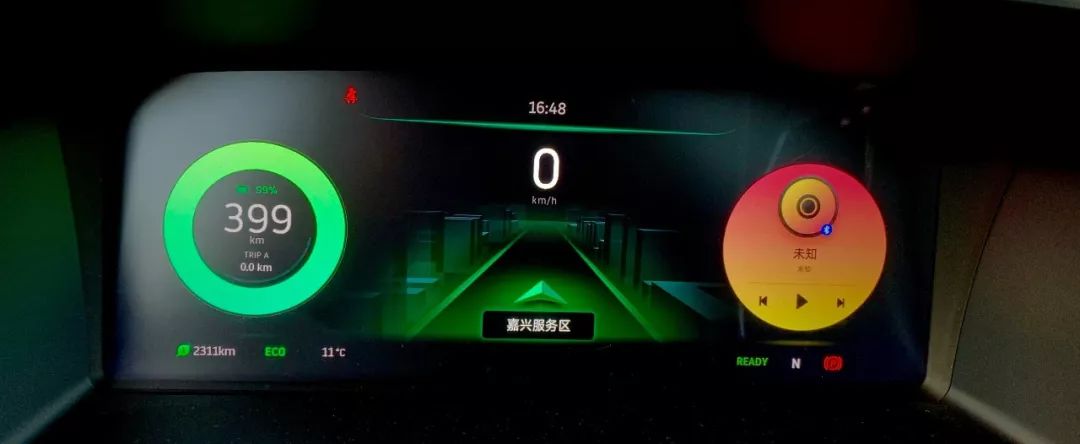
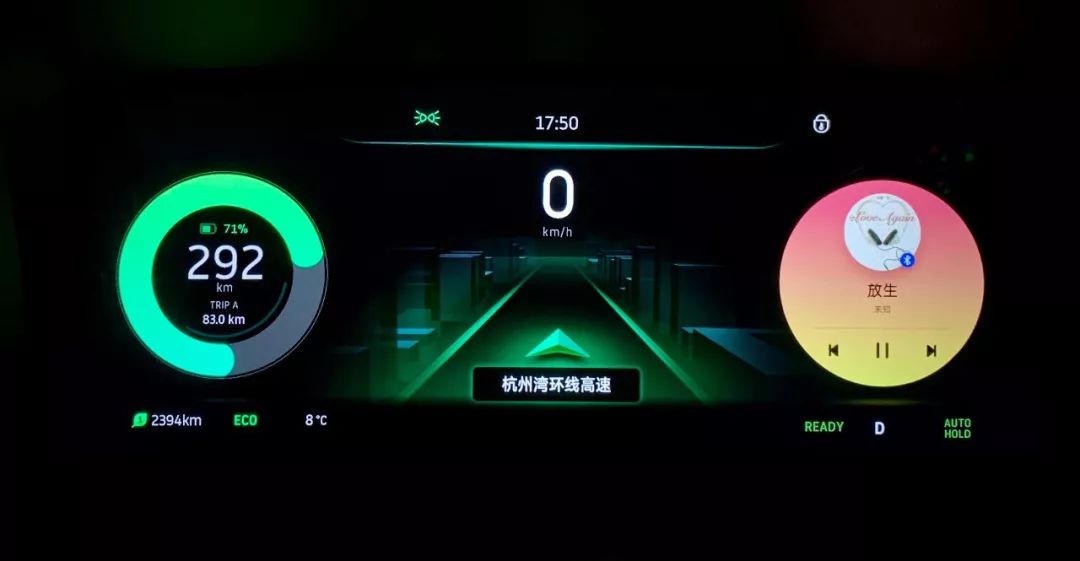
This segment of the trip is a total of 83 kilometers, with an average speed of 84 km/h. The energy consumption per 100 kilometers is 17.7 kWh, a significant decrease from the previous 23 kWh/100 km.
Scenario 5: Overnight battery drain test
Wait a minute, audience, don’t go. There is still one scenario left to discuss.
This scenario is not shown in the table because it is special. The vehicle was stationary, yes, I tested how much battery the NIO ES6 would lose overnight.
In temperatures ranging from -1℃ to 3℃, leaving the NIO ES6 400 parked overnight caused a drop in range of between 4 to 7 kilometers according to the display. However, there are many factors that can affect this data, so consider it as a reference.
Essential range summary
First of all, let’s talk about the energy consumption in the city. The energy consumption in the city depends on things like whether the air conditioning is on and individual driving habits. It is possible to drive 14 kilometers on 1 kWh of charge if driven economically, but the energy consumption can reach 24 kWh/100 km if not. In my daily driving in the current weather conditions, I use around 18 kWh per 100 kilometers.
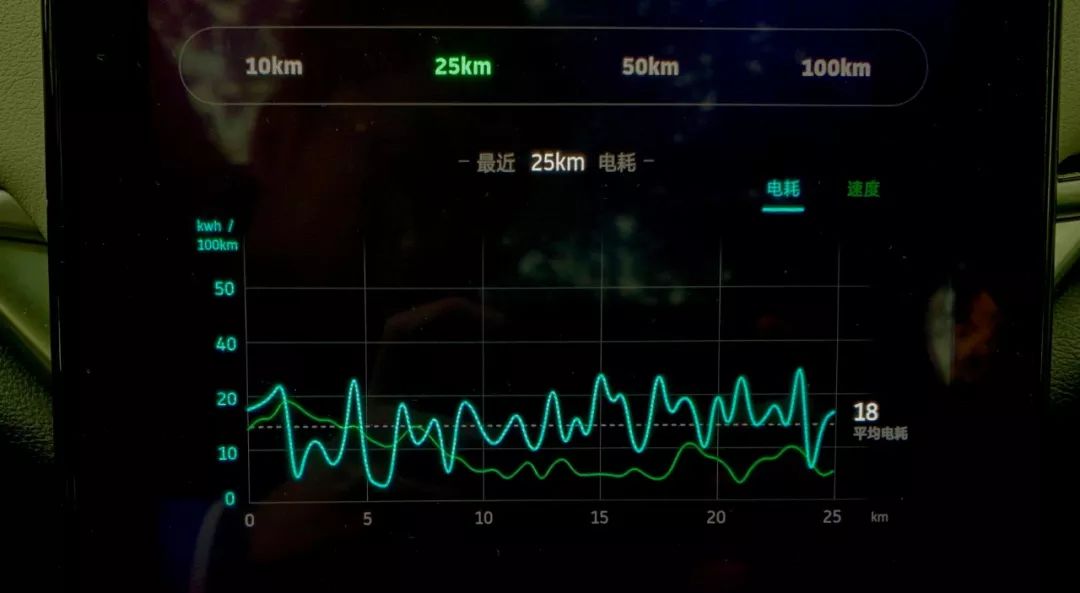
In Shanghai’s temperature conditions, driving at 120 km/h continuously results in energy consumption of 23 kWh/100 km. The faster the speed, the greater the wind resistance and the higher the energy consumption.
If you want a relatively long range on the expressway, I recommend setting the speed at around 100 km/h. With energy consumption of 17.7 kWh/100 km, a safe range of more than 250 kilometers can be achieved. And, don’t forget to check your tire pressure before departure because an appropriate tire pressure also helps to improve range. Whether or not to turn on the air conditioning is up to you.What? You said there’s air leakage when the air conditioner is not turned on? I’ll talk about this in my next post!



This article is a translation by ChatGPT of a Chinese report from 42HOW. If you have any questions about it, please email bd@42how.com.
